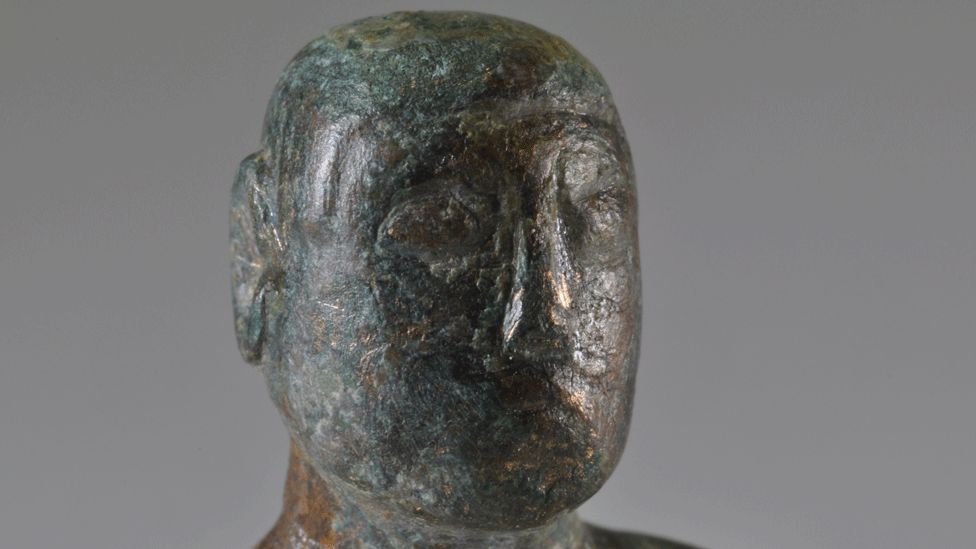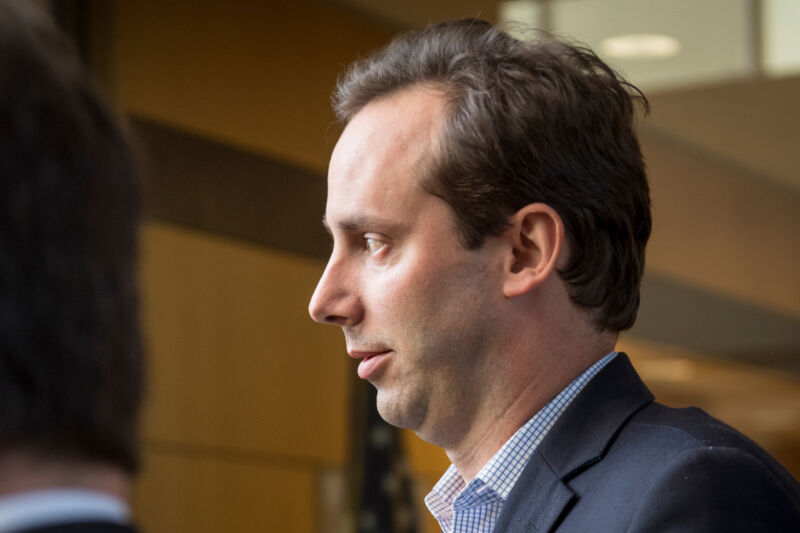UN condemns Myanmar junta after two killed in anti-coup unrest
Issued on: 21/02/2021 -
 Authorities have gradually ratcheted up their tactics against a massive and largely peaceful civil disobedience campaign demanding the return of ousted civilian leader Aung San Suu Kyi STR AFP
Authorities have gradually ratcheted up their tactics against a massive and largely peaceful civil disobedience campaign demanding the return of ousted civilian leader Aung San Suu Kyi STR AFP
Yangon (AFP)
The deaths of two anti-coup protesters in Myanmar sparked fresh UN condemnation of the country's new military regime on Sunday, as mourners prepared for the funeral of a young woman who became a national symbol of resistance to the junta.
Authorities have gradually ratcheted up their tactics against a massive and largely peaceful civil disobedience campaign demanding the return of ousted civilian leader Aung San Suu Kyi.
Saturday marked the deadliest day yet in more than two weeks of nationwide street demonstrations when security forces fired upon a rally in Mandalay, sending the crowd fleeing in fear.
UN Secretary General Antonio Guterres condemned the use of "deadly violence" in the melee, which emergency workers said had killed one teenager and wounded dozens more.
"The use of lethal force, intimidation & harassment against peaceful demonstrators is unacceptable," Guterres wrote on Sunday.
The confrontation began when security forces in Mandalay, the country's second-largest city and cultural capital, attempted to raid a shipyard and detain port staff on strike to protest the army takeover.
Medical rescue workers said the troops used live rounds, rubber bullets and tear gas against a crowd of people who had started flinging rocks in an effort to stop the arrests.
"Two people were killed," said Hlaing Min Oo, the chief of a Mandalay-based volunteer emergency rescue team.
Another emergency worker on the scene, who asked not to be named for fear of reprisals, confirmed the death toll.
Graphic video circulated on Facebook showing a teenaged victim, splayed on the ground and bleeding from his head as a bystander placed a hand on his chest to feel for a heartbeat.
Hlaing Min Oo said another 30 were wounded, with half of the injuries from live rounds.
Local media reported more than a dozen people were arrested after the clash.
"They beat and shot my husband and others," one resident told AFP. "He was standing on the side and watching the protest but the soldiers took him away."
Myanmar emerged from its seventh consecutive overnight internet blackout on Sunday, a measure imposed by the junta after neighbourhoods mobilised watch groups to guard against evening arrests.
A funeral was to be held in the capital Naypyidaw for a young protester who died on Friday after being shot in the head during a rally last week.
Mya Thwate Thwate Khaing, who turned 20 last Thursday as she lay unconscious in a hospital bed, has since become a potent symbol of the campaign against military rule.
Demonstrators have hoisted her photos high on street marches and unfurled a huge banner of artwork from a bridge in Yangon depicting the moment she was shot.
Vigils for the grocery store worker were held across the commercial hub on Saturday, with protesters lighting candles and laying roses by a banner with her picture.
- Hundreds arrested -
Much of Myanmar has been in uproar since troops detained Suu Kyi on February 1, with massive street demonstrations seen in major cities and isolated villages across the country.
The new junta has so far remained impassive in the face of relentless international condemnation, with the US, Britain and Canada all unveiling sanctions targeting the country's top generals.
European Union foreign ministers will meet Monday to discuss their own measures against the regime.
The bloc's foreign policy chief Josep Borrell urged security forces to "immediately stop violence against civilians" on Saturday after the violence in Mandalay.
Nearly 570 people have been detained since the coup, according to the Assistance Association for Political Prisoners monitoring group.
Among those targeted have been railway workers, civil servants and bank staff, who have walked off their jobs as part of the anti-coup campaign.
A military spokesman said this week that one police officer had died in Mandalay after another clash there.
Suu Kyi -- who has not been seen since she was detained in a dawn raid -- has been hit with two charges by the junta, one of them for possessing unregistered walkie-talkies.
Her hearing is expected on March 1.
Yangon (AFP)
The deaths of two anti-coup protesters in Myanmar sparked fresh UN condemnation of the country's new military regime on Sunday, as mourners prepared for the funeral of a young woman who became a national symbol of resistance to the junta.
Authorities have gradually ratcheted up their tactics against a massive and largely peaceful civil disobedience campaign demanding the return of ousted civilian leader Aung San Suu Kyi.
Saturday marked the deadliest day yet in more than two weeks of nationwide street demonstrations when security forces fired upon a rally in Mandalay, sending the crowd fleeing in fear.
UN Secretary General Antonio Guterres condemned the use of "deadly violence" in the melee, which emergency workers said had killed one teenager and wounded dozens more.
"The use of lethal force, intimidation & harassment against peaceful demonstrators is unacceptable," Guterres wrote on Sunday.
The confrontation began when security forces in Mandalay, the country's second-largest city and cultural capital, attempted to raid a shipyard and detain port staff on strike to protest the army takeover.
Medical rescue workers said the troops used live rounds, rubber bullets and tear gas against a crowd of people who had started flinging rocks in an effort to stop the arrests.
"Two people were killed," said Hlaing Min Oo, the chief of a Mandalay-based volunteer emergency rescue team.
Another emergency worker on the scene, who asked not to be named for fear of reprisals, confirmed the death toll.
Graphic video circulated on Facebook showing a teenaged victim, splayed on the ground and bleeding from his head as a bystander placed a hand on his chest to feel for a heartbeat.
Hlaing Min Oo said another 30 were wounded, with half of the injuries from live rounds.
Local media reported more than a dozen people were arrested after the clash.
"They beat and shot my husband and others," one resident told AFP. "He was standing on the side and watching the protest but the soldiers took him away."
Myanmar emerged from its seventh consecutive overnight internet blackout on Sunday, a measure imposed by the junta after neighbourhoods mobilised watch groups to guard against evening arrests.
A funeral was to be held in the capital Naypyidaw for a young protester who died on Friday after being shot in the head during a rally last week.
Mya Thwate Thwate Khaing, who turned 20 last Thursday as she lay unconscious in a hospital bed, has since become a potent symbol of the campaign against military rule.
Demonstrators have hoisted her photos high on street marches and unfurled a huge banner of artwork from a bridge in Yangon depicting the moment she was shot.
Vigils for the grocery store worker were held across the commercial hub on Saturday, with protesters lighting candles and laying roses by a banner with her picture.
- Hundreds arrested -
Much of Myanmar has been in uproar since troops detained Suu Kyi on February 1, with massive street demonstrations seen in major cities and isolated villages across the country.
The new junta has so far remained impassive in the face of relentless international condemnation, with the US, Britain and Canada all unveiling sanctions targeting the country's top generals.
European Union foreign ministers will meet Monday to discuss their own measures against the regime.
The bloc's foreign policy chief Josep Borrell urged security forces to "immediately stop violence against civilians" on Saturday after the violence in Mandalay.
Nearly 570 people have been detained since the coup, according to the Assistance Association for Political Prisoners monitoring group.
Among those targeted have been railway workers, civil servants and bank staff, who have walked off their jobs as part of the anti-coup campaign.
A military spokesman said this week that one police officer had died in Mandalay after another clash there.
Suu Kyi -- who has not been seen since she was detained in a dawn raid -- has been hit with two charges by the junta, one of them for possessing unregistered walkie-talkies.
Her hearing is expected on March 1.
Myanmar protesters gather again as UN chief condemns deadly crackdown
Issued on: 21/02/2021 -
Text by :FRANCE 24
Thousands of opponents of Myanmar's military coup gathered again on Sunday in towns from north to south, undeterred by the bloodiest episode of their campaign the previous day when police and soldiers opened fire in the city of Mandalay, killing two.
United Nations Secretary General Antonio Guterres condemned the use of "deadly violence" in the country's second-most populous city, which emergency workers said killed one teenager and wounded dozens more.
"The use of lethal force, intimidation & harassment against peaceful demonstrators is unacceptable," Guterres wrote.
The military has been unable to quell the demonstrations and a civil disobedience campaign of strikes against the February 2 coup and the detention of elected leader Aung San Suu Kyi and others, even with a promise of a new election, arrests and warnings against dissent.
Early on Sunday, police arrested a famous actor wanted for supporting opposition to the coup, his wife said, while Facebook deleted the military's main page under its standards prohibiting the incitement of violence.
In the main city of Yangon, several thousand young people gathered at two sites to chant slogans, while hundreds massed peacefully in the second city of Mandalay, footage by a media outlet showed.
In Myitkyina town in the north, which has seen confrontations in recent days, people laid flowers for the dead protesters while young people with banners drove around on motorbikes.
Crowds marched in the central towns of Monywa and Bagan and in Dawei and Myeik in the south, posted pictures showed.
"They aimed at the heads of unarmed civilians. They aimed at our future," a young protester in Mandalay told the crowd.
Military spokesman Zaw Min Tun, who is also the spokesman for the new military council, did not respond to request for comments.
He told a news conference on Tuesday the army's actions were within the constitution and supported by most people, and he blamed protesters for instigating violence.
The more than two weeks of protests had been largely peaceful, unlike previous episodes of opposition during nearly half a century of direct military rule to 2011.
Members of ethnic minorities, poets and transport workers marched peacefully on Saturday in various places but tension escalated in Mandalay where police and soldiers confronted striking shipyard workers.
Some demonstrators fired catapults at police as they played cat and mouse. Police responded with tear gas and gunfire at the protesters, witnesses said.
Video clips on social media showed members of the security forces firing and witnesses said they found the spent cartridges of live rounds and rubber bullets.
Two people were shot and killed and 20 were wounded, said Ko Aung, a leader of a volunteer emergency service.
>> Myanmar marks Union Day with the multi-ethnic national dream slipping further away
Police were not available for comment but the state-run Global New Light of Myanmar newspaper said the strikers sabotaged vessels and attacked police with sticks, knives and catapults. Eight policemen and several soldiers were injured, it said.
The newspaper did not mention the deaths but said: "Some of the aggressive protesters were also injured due to the security measures conducted by the security force."
A young woman protester became the first death among anti-coup demonstrators on Friday. She was shot in the head on February 9 in the capital, Naypyitaw. The army says one policeman has died of injuries sustained in a protest.
Suu Kyi's National League for Democracy (NLD) condemned the violence in Mandalay as a crime against humanity.
The army seized power after alleging fraud in Nov. 8 elections that the NLD swept, detaining Suu Kyi and others. The electoral commission had dismissed the fraud complaints.
Facebook said it deleted the military's main page, Tatmadaw True News Information, for repeated violations of its standards "prohibiting incitement of violence and coordinating harm”.
'Unacceptable' use of force
Early on Sunday, police arrested actor Lu Min, who has been a prominent figure in Yangon protests and was one of six celebrities who the army said on Wednesday were wanted under an anti-incitement law for encouraging civil servants to join the protest.
His wife, Khin Sabai Oo, said in a video posted on his Facebook page that police had come to their home in Yangon and taken him away.
The Assistance Association for Political Prisoners activist group says 569 people have been detained in connection with the coup.
Western countries that earlier condemned the coup spoke out against the violence.
US State Department spokesman Ned Price said the United States was "deeply concerned" by reports that security forces had fired on protesters, while France's foreign ministry strongly condemned the "unacceptable" use of violence against protesters.
Singapore and Britain also condemned the violence, with British foreign minister Dominic Raab saying shooting protesters was "beyond the pale".
The United States, Britain, Canada and New Zealand have announced limited sanctions with a focus on military leaders but the generals have long brushed off foreign pressure.
Suu Kyi faces a charge of violating a Natural Disaster Management Law as well as illegally importing six walkie-talkie radios. Her next court appearance is on March 1.
(FRANCE 24 with AFP, REUTERS)









